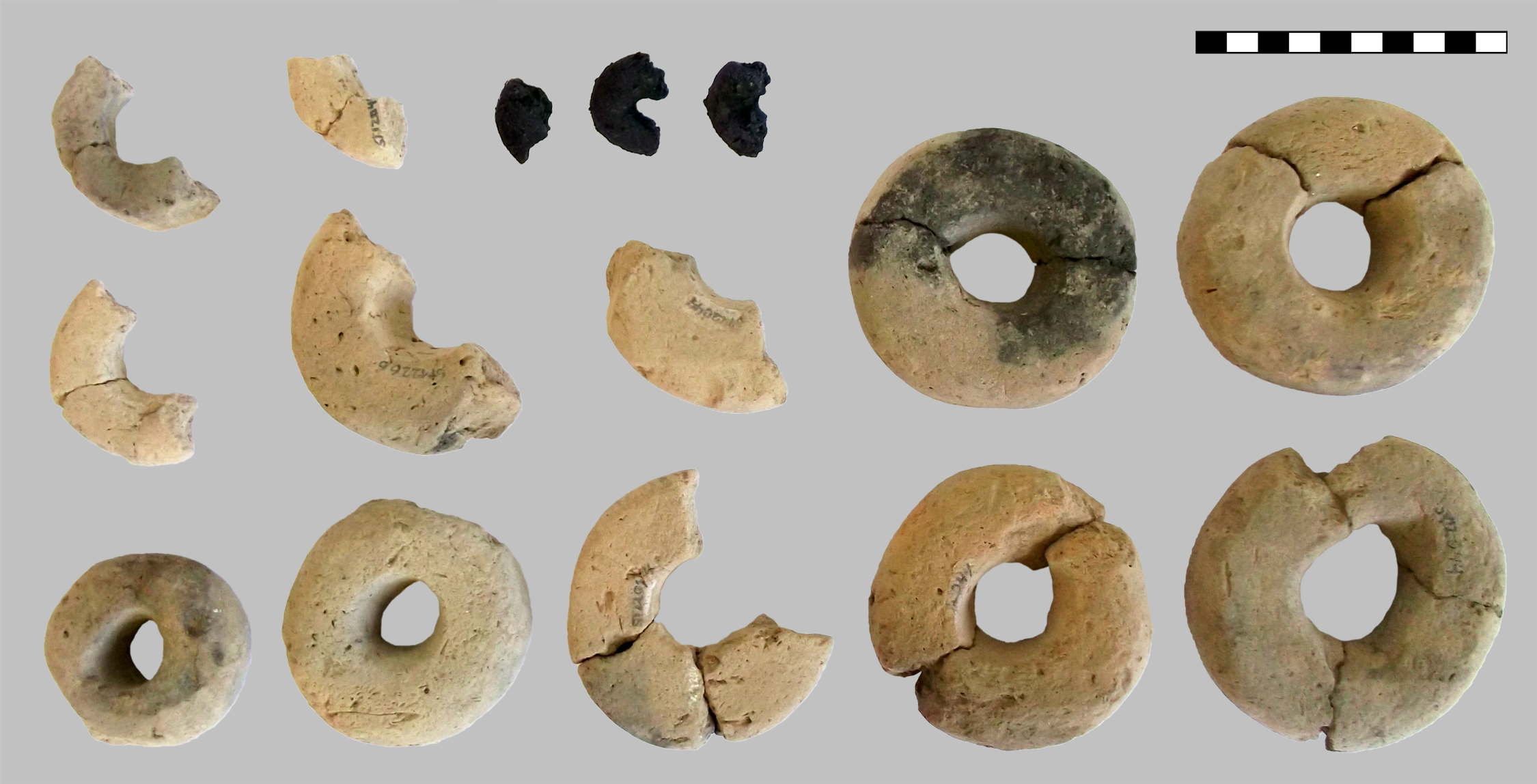In the Bronze Age, People Labored Over Cereal That No One Ate
They probably used the Cheerio-like rings in rituals, not the kitchen.

Forty-one years ago in Austria, archaeologists unearthed three charred, fragmented ring-shaped objects with no clear purpose or origin. Last week, researchers announced these mysterious rings were technically ancient breakfast cereal. Fittingly, they bear an uncanny resemblance to Cheerios. These findings, published in PLOS One with the witty title “The Hoard of the Rings,” cast light on how cultures in the Late Bronze Age produced and prepared processed grains.
The archaeologists first excavated the prehistoric cereal from an Austrian site called Stillfried an der March in 1978, unearthing the rings in one of the storage pits that speckle the Stillfried site. After testing the objects with radiocarbon dating and scanning electron microscopy, the researchers realized they were made of a fine dough of hulled barley and wheat. Despite lacking preservatives, the cereal has survived surprisingly well since its burial in 900 to 1,000 B.C., according to the study. But even though they still look appetizing, you probably can’t eat them.
The researchers believe prehistoric people may have shaped the cereal into small rings out of a wet dough mixture and then dried them without baking. The arduous, time-consuming work that went into this process suggests the cereal may not have been made to be eaten, according to the study. Although the researchers can’t say for sure what the rings were used for, they do have one hypothesis. The cereal was excavated alongside a heap of other ring-shaped clay loom weights—a tool for ancient weaving—perhaps indicating that they were created as imitations of the loom weights. Late Bronze Age settlements often used loom weights as grave goods, which were items buried with the dead to ease their passage beyond the grave. In other words, some lucky prehistoric person may have crossed into the afterlife with a tasty, ritually important bag of cereal.
Stillfried an der March, which sits on a prominent knoll between Austria’s Weinviertel hills and the banks of the Morava river, was a major trading post during the Late Bronze Age. It also served as a major grain hub, with around 100 large grain storage pits that archaeologists excavated in the 1970s and 1980s. So if you had a hankering for cereal around 1,000 B.C., Stillfried an der March may have been your best bet. It’s worth noting, however, that certain pits did not contain cereal, according to ScienceAlert. One quite notable pit contained seven dead bodies—not quite as scrumptious as prehistoric Cheerios.
Gastro Obscura covers the world’s most wondrous food and drink.
Sign up for our regular newsletter.

















Follow us on Twitter to get the latest on the world's hidden wonders.
Like us on Facebook to get the latest on the world's hidden wonders.
Follow us on Twitter Like us on Facebook